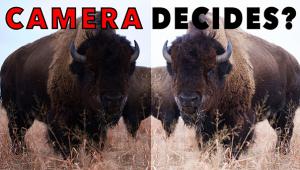Take Your Wildlife Images from Soft to SHARP with These 8 Tricks (VIDEO)

There’s nothing like a bit of motion blur or slightly missed focus to spoil an otherwise great shot. But with the eight tips below, and a little practice, you’ll be able to shoot sharper wildlife photographs every time.
Nature shooter Steve Perry is also a respected instructor. And in this tutorial he shares eight field-tested methods that will keep you from deleting otherwise amazing shots because of the lack of critical sharpness.

Perry says that when photographers ask him to diagnose soft images, 70-80% of the time the problem has to do with shutter speed. While many photographers think that a shutter speed of 1/1000 is sufficient to prevent motion blur, Perry demonstrates why you should crank up the speed to 1/2000 or 1/4000—especially with fast-moving subjects. At the very least, he suggests using a shutter speed that’s one-stop faster than you typically use.
As you might suspect, Perry also urges photographers to give up shooting wildlife handheld, and always mount the camera on a tripod. “The bottom line for me,” he explains, “is that when I’m using a long lens, even with a shutter speed of 1/800, I grab a monopod or tripod and my shots are consistently sharper than when I don’t.

Other tips in the video include setting the proper AF area. Otherwise you may end up with a photo that’s sharp in all the wrong places. Perry says the trick here is to use the smallest AF area that you can reliably keep on your subject. With stationary or slow-moving subjects, that typically means single-point AF targeted on the animal’s eye.
Perry’s other secrets involve keeping autofocus engaged and on target—even with stationary subjects, boosting your odds by shooting longer bursts, avoiding heat diffraction and haze, and much more. So take a look and you’ll never have to settle for soft shots again.
After watching the video, head over to Perry’s YouTube channel for more helpful tips. And don’t miss the earlier tutorial we posted, with two autofocus techniques that are essential for great wildlife photos.















































